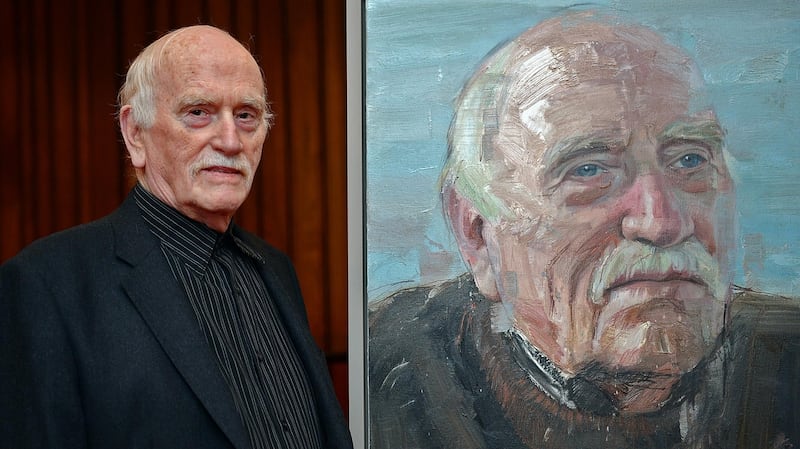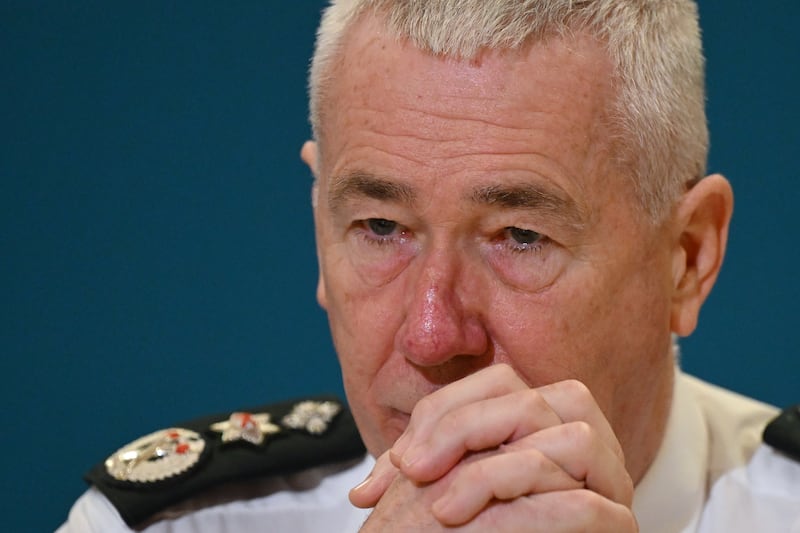There was a special meeting of the Abbey Board in January 1939 to mark the death of WB Yeats, which had occurred a few days earlier in the south of France. The board dispatched Lennox Robinson to France to help Georgie Hyde-Lees, the wife of WB Yeats, with the funeral, but when he got there she had already left, and it was more than nine years before the reburial in Sligo in circumstances that raised questions about the identity of the remains in the grave. There are other minutes of meetings of the Abbey board for that grim year of 1939, but the death of Yeats marks the real terminal point of the remarkable collection of minute books, which the National Theatre launched on December 14th and are now available to view online.
The authority of Yeats runs right through the collection, and when he is absent the fact is noticeable. Indeed one of the features of these minutes is how much this is a writers' theatre around the figure of Yeats, with writers such as Lennox Robinson, Brinsley McNamara, Robert Farren and FR Higgins. The preoccupation with actors is almost as strong as that with new plays, particularly the fluctuation in their incomes and the difficulties of the theatre in trying to meet the bill.
The period also covers O'Casey's involvement with the Abbey, and the collection is particularly revealing about the internal strains in the theatre during the eventual run of The Silver Tassie in 1935. (It was initially rejected by the Abbey in 1928.) Both actors, such as FJ McCormick, and a writer, such as Brinsley McNamara, wanted nothing to do with the play and the minutes record the seriousness of the row that spilled over into the press. Other recurring preoccupations in the 1920s and 1930s included the Abbey's search, spearheaded by Yeats, to find producers, or, as we would now say, directors. This led to a failure to involve Tyrone Guthrie but a success in attracting Hugh Hunt, who became an important influence on the work of the theatre, particularly on its style of production.

As a young man myself, hanging about the Dublin literary scene, I met two of the writers who were at different times on the Abbey board, Padraic Colum and Frank O'Connor. Colum was there from the very beginning in 1904. When I met him in the 1950s he looked like an elderly farmer in his best tweed Sunday suit and highly polished black-laced boots up in Dublin from the midlands. In fact he had just flown in from New York. He was quite self-conscious about passing on a tradition to younger writers, although what he most wanted to talk about was not the Abbey but the strong relationship that he and his wife Mary had had with James Joyce. (I think it was not that long after the publication of Mary's book on that friendship which Padraic had edited after her death.)
The one thing I remember Colum saying about Yeats was that he sensed that Yeats disliked the new kind of play coming into the Abbey in the 1920s and 1930s. This was the naturalistic drama of rural and small town Irish life where the playwright came from the same background: in other words, plays much like those of Colum. The Anglo-Irish plays of Yeats and his contemporaries were, in contrast, based upon the creative distance of the playwright from the subject matter, a distance that was political, social and religious.
O'Connor is an active figure in these pages and (like Yeats himself) anxious as a member of the board to protect his own work for the stage, particularly in the matter of casting. He was also for a while the editor of the Arrow house magazine. He was appointed to the board in 1935 and resigned after Yeats's death in 1939. He was a combative man and his letter of resignation is here, in which he makes no attempt to disguise his low opinion of his fellow directors, especially Lennox Robinson and Ernest Blythe.
I met Frank O'Connor on several occasions, again in the 1950s when I was a student at UCD and shortly thereafter. He indicated that he had no interest in the Abbey, which he felt was beyond redemption. At the time there was a certain amount of Abbey bashing going on, an activity that I took part in myself with some gusto. I published an essay in the magazine Studies in 1959 criticising the management of Ernest Blythe in the theatre and calling for a new Irish drama to reflect life as it really was in the country. I have no doubt whatsoever that much of the inspiration for this essay came from the kind of dissident contributions that O'Connor and Sean O'Faolain brought to public discourse in Dublin at the time. Another member of the Abbey board Gabriel Fallon responded to my essay in which he advised me to go and write a play myself. I think he was surprised when I did so.
Are there any surprises here? Well, I, for one, was surprised to learn that Dublin Corporation attempted to censor the Dublin theatres in this same year 1939. Here is the description of what happened in the minutes: “On the 13th March last a gentleman introducing himself in an over-pleasant manner as Mr Hugh Allen visited the Office and stated that he required admission to the theatre as an Inspector of the Corporation.” The over-pleasant manner of Allen soon disappeared, however, and he declared his intention to observe and vet what was going on up on the stage to make sure that nothing “of an objectional manner” was happening there. The Abbey won this battle. Allen was told that he would have to buy a ticket like everyone else if he wished to see a play. The legal advice given to the theatre was that the corporation had no power to impose stage censorship. Allen was told that he could inspect the premises under the by-laws on public safety and that was the end of that.
As the 1930s come to a close, in these minutes it becomes apparent that the dominant figure in the theatre’s administration, at every level, was now Ernest Blythe, a former minister for finance who had played an important role in the creation of a State subsidy for the theatre, effectively saving the theatre at a critical time. Like Frank O’Connor, Blythe joined the board in 1935 but he was to go on and manage the theatre with a powerful control until the 1960s.
There is controversy about the role of Blythe in the theatre's history. He is usually associated with artistic decline and a deadly conservatism. The first thing to be said about Blythe is that he was the choice of Yeats, who clearly valued him. I never met Blythe but I had correspondence with him. He rejected my play The Death and Resurrection of Mr Roche. But he wrote several warm, supportive letters to me about another play of mine, The O'Neill. I now believe he was responsible, with Tomas MacAnna, for its eventual production in the new Peacock. This is a theatre of ghosts but it is not always possible to fully identify them, who they are or, indeed, what they are.
This article was inspired by the online publication of the Abbey Theatre Minute Books (1904-1939), which cover the period when WB Yeats and Lady Gregory managed the Abbey Theatre. These Minute Books are now available to read online at nuigalway.ie/abbeytheatreminutebooks

















